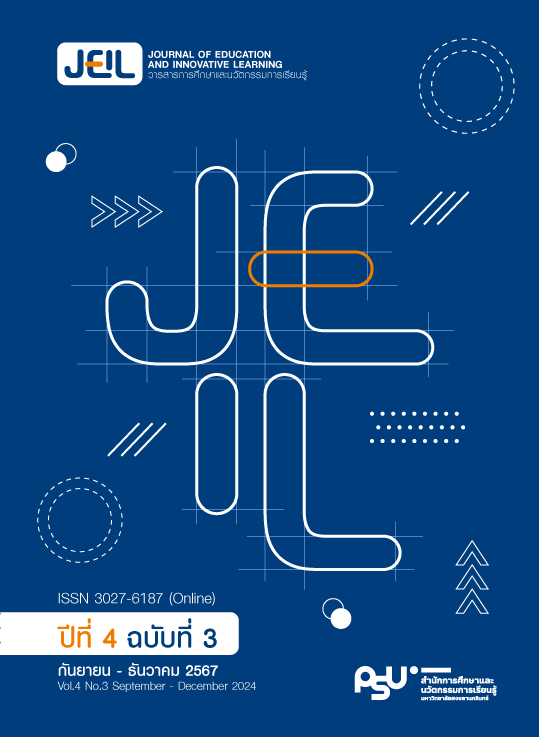Development of a Rope Type Dynamometer Using LabVIEW for Bachelor of Engineering Program Students at Rangsit University
Main Article Content
Abstract
The objectives of this research were 1) to develop a rope-type dynamometer using LabVIEW for bachelor of engineering program students at Rangsit University, and 2) to survey the students' satisfaction with the torque measurement device. The researcher tested the torque measurement device with a sample of 30 undergraduate engineering students who have been registered in RSU 183 (Do It Yourself) at Rangsit University. A specific sample that included individuals who are proficient in studying (good, average, and poor, 10 each) was chosen. Once the trial was over, a questionnaire was administered to the students to measure user satisfaction with the torque measurement device, and its results were analyzed. It was found that the torque measurement set created can measure torques up to 10 Nm with a maximum error of ±2.20%. The mean score and standard deviation of the sample group opinions toward the kit were respectively 4.52 and 0.52, indicating that the sample group was strongly satisfied with the development kit.
Article Details

This work is licensed under a Creative Commons Attribution-NonCommercial-NoDerivatives 4.0 International License.
The contents and data in published articles in the Journal of Education and Innovative Learning are considered the ideas and responsibility of the author(s). The Editorial team does not necessarily agree with any ideas or hold mutual responsibility of them. Plagiarism is not permitted, even for academic purposes. However, proper citation must be given whenever referencing the articles.
References
Chiwapanthusri, K. (2011). LabVIEW. Bangkok: Se-Education. [in Thai]
Gopinath, R. (2014). Design of a rope brake dynamometer. Middle-East Journal of Scientific Research, 20(5), 650-655. doi:10.5829/idosi.mejsr.2014.20.05.11356
Kaewrattanasripho, P., Wattana, A., & Emudom, V. (2018). Effectiveness of experimental kit of power generation from water turbines at Rangsit University (Research report). Patumthani: Rangsit University. [in Thai]
Kaewrattanasripho, P. (2019). Effectiveness of Experimental Kit of Wind Turbine Simulator. Technical Education Journal: King Mongkut’s University of Technology North Bangkok, 10(3), 162-170. Retrieved from https://ojs.kmutnb.ac.th/index.php/jote/article/view/3597 [in Thai]
Kaewrattanasripho, P. (2023). Development of a Rope Type Dynamometer Using LabVIEW (Research report). Patumthani: Rangsit University. [in Thai]
Khumyoung, K. (2013). The development of instructional training model for the laboratory course (Doctoral dissertation). King Mongkut's University of Technology North Bangkok, Thailand. Retrieved from https://rsuir-library.rsu.ac.th/bitstream/123456789/2573/1/PHONGSIN%20%20KAEWRATTANASRIPHO.pdf [in Thai]
Poonlapthawee, K. (1985). Educational evaluation. Bangkok: King Mongkut's Institute of Technology North Bangkok. [in Thai]
Promachan, S. (2009). Course development (2nd ed.). Bangkok: King Mongkut’s University of Technology North Bangkok. [in Thai]
Rope Brake Dynamometer. [Image] (n.d.). Retrieved from https://www.indiamart.com/proddetail/rope-brake-dynamometer-21588719591.html
Rope Brake. [Image] (n.d.). Retrieved from https://www.xeepl.com/view-product.php?productid=593.
Saiyos, L., & Saiyos, A. (1993). Principles of educational research. Bangkok: Academic Promotion Center Publishing House. [in Thai]
Vidian, F., Putra, D. H., & Kholis, A. (2020). A short review and development of rope brake dynamometer for measurement of brake power on small scale engine. Journal of Mechanical Engineering Research and Developments, 43(2), 144-153. Retrieved from https://jmerd.net/02-2020-144-153

